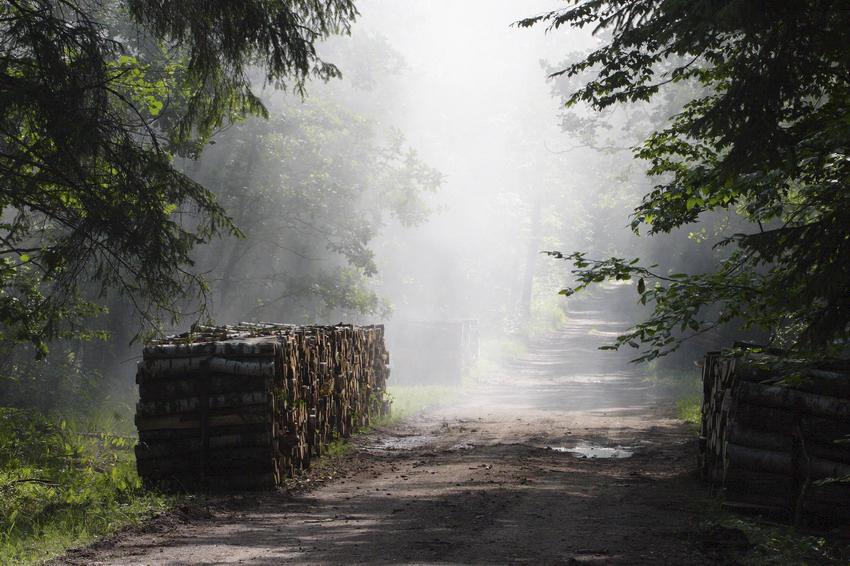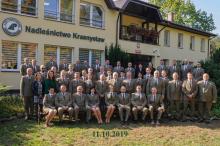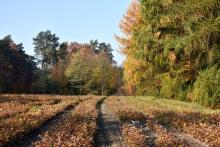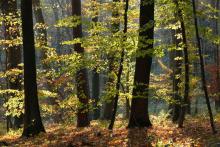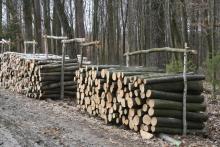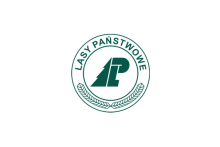 Asset Publisher
Asset Publisher
The State Forests National Forest Holding
The State Forests National Forest Holding is the largest organisation in the European Union managing forests, which belong to the State Treasury and celebrating its 90 anniversary this year.
Presently, we manage the area of one third of Poland's territory. Not long after the end of the Second World War, there was only 21 % of the area. Every year we plant 500 million of new trees, as we want Polish forests grow all the time.
Every year Polish foresters plant 500 million of trees.
85 % of nature reserves in Poland are located within the State Forests. 40 % of the forests managed by General Directorate of the State Forests are protected within the framework of European network Natura 2000. We fight against many threats: natural disasters, plaques of insects, trees' diseases, fires, pollutions, as well as poaching and vandalism.
We take care the forestry supplying the market with timber, as ecological and universal material, to be carried on in accordance with rules of balanced development (photography P.Fabjański).
One of our major tasks is making forests accessible to the society. We invite you to take advantage of these beautifully located within the forest wilderness holiday resorts, forester's lodges or guest rooms. That is for you, we create thousand kilometres of hiking trails, cycling paths or camping sites. All the above mentioned, you can find in service www.czaswlas.pl.
We also take care the forestry supplying the market with timber, as ecological and universal material, to be carried on in accordance with rules of balanced development. We obtain over 30 million of cubic meters of wood annually, twice as much as at the beginning of the nineties of the XX century.
Despite of this, the average of wood abundance per hectare of our forests is one fourth bigger than 20 years ago and 40% bigger than the average of European Union currently amounts.
In Poland in sectors connected with the forestry, there work about 375 thousand of people. It means that each 40 working Pole works in the forest.
In Poland in sectors connected with the forestry, there work about 375 thousand of people. It means that each 40 working Pole works in the forest. The sector of wood processing works out approximately 8 % of our GDP (Gross Domestic Product). Among others, thanks to the timber from the State Forests Poland is the 10 largest producer of furniture in the world, and the 4 largest furniture exporter.
The State Forests employ 25 thousand people. That way we are the 9 biggest employer in Poland. Among the largest companies in our country it takes 22 place in respect of its incomes and 11 place in respect of its profits. The value of assets, we manage, reaches 300 million zl. If we add social values, it will be worth one billion zlotych. We do not use money from the budget, but we earn money on our own to support the business. In spite of the financial crisis, since 2002, we continuously note down profits. Moreover, we pay taxes amounting 1,3 billion zl annually.
87 % of Poles think, the foresters are competent. We willingly share our knowledge of Polish forests, of their history and of nature values with the others. We publish books, periodicals, brochures; we also administer the website www.lasy.gov.pl . For children, the youth and teachers, we prepared internet service "E-lynx' Lynx Forest" (www.erys.pl). Our staff has supported schools in field of nature education for years. We also organise many actions to let people broaden their knowledge about forest, nature and ecology.
 Asset Publisher
Asset Publisher
DREWNO Z LUBELSKICH LASÓW CENIONE NIE TYLKO W KRAJU
DREWNO Z LUBELSKICH LASÓW CENIONE NIE TYLKO W KRAJU
 Lubelscy leśnicy zadbali o właściwą ekspozycję surowca, fot. Sebastian Jankowski, RDLP w Lublinie
Lubelscy leśnicy zadbali o właściwą ekspozycję surowca, fot. Sebastian Jankowski, RDLP w Lublinie
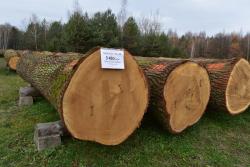 Rekordową cenę wynoszącą 5 450 zł osiągnięto za m3 surowca pochodzącego z Nadleśnictwa Puławy, fot. Sebastian Jankowski, RDLP w Lublinie
Rekordową cenę wynoszącą 5 450 zł osiągnięto za m3 surowca pochodzącego z Nadleśnictwa Puławy, fot. Sebastian Jankowski, RDLP w Lublinie
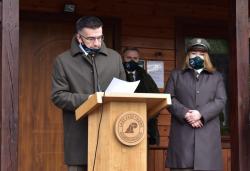 Podsumowania tegorocznej Submisji i odczytania oficjalnych wyników dokonał zastępca dyrektora ds. ekonomicznych, Piotr Mróz, fot. Sebastian Jankowski, RDLP w Lublinie
Podsumowania tegorocznej Submisji i odczytania oficjalnych wyników dokonał zastępca dyrektora ds. ekonomicznych, Piotr Mróz, fot. Sebastian Jankowski, RDLP w Lublinie
Za nami jedenasta edycja Submisji Drewna Cennego „Lubelska Jesień 2020”. Nasi leśnicy zakończyli ją z najwyższą w historii tego wydarzenia ceną za metr sześcienny drewna dębowego.
Rekordową cenę wynoszącą 5 450 zł osiągnięto za m3 surowca pochodzącego z Nadleśnictwa Puławy, a wartość całego losu wyniosła 16 459 zł. Mimo kryzysu gospodarczego spowodowanego sytuacją epidemiczną, podczas tegorocznej Submisji utrzymano wysoką cenę średnią za metr sześcienny oferowanego surowca, a pierwszy raz w historii „Lubelskiej Jesieni” drewno zostało zakupione przez kontrahenta z Włoch, co tylko potwierdziło fakt, że cieszy się ono dużym uznaniem nie tylko na arenie krajowej, lecz także międzynarodowej.
Rozstrzygnięcia jedenastej z kolei Submisji organizowanej przez RDLP w Lublinie dokonano tradycyjnie na placu ekspozycyjnym przy Centrum Edukacyjno-Submisyjnym Nadleśnictwa Krasnystaw. Podsumowania i odczytania oficjalnych wyników dokonał zastępca dyrektora ds. ekonomicznych, Piotr Mróz.
W tym roku do sprzedaży zaoferowano ponad 741 m3 surowca dębowego o ponadprzeciętnych cechach użytkowych. Nabywców znalazło niemal całe proponowane drewno – nie sprzedano tylko dwóch spośród 616 oferowanych losów. Poza rodzimymi gatunkami dębu klienci mogli licytować również sztuki dębu czerwonego.
–O tym, że drewno z lubelskich lasów miało duże wzięcie podczas tegorocznej edycji świadczy najlepiej zapotrzebowanie podmiotów zainteresowanych jego zakupem, które ponad pięciokrotnie przewyższało podaż dębu i przeszło dwukrotnie dębu czerwonego – zaznacza Piotr Mróz.
Ostatecznie średnia cena za metr sześcienny oferowanego surowca wyniosła 3 058 zł i była tylko o 21 zł niższa od najwyższej w historii, którą udało się osiągnąć podczas zeszłorocznej, jubileuszowej edycji.
Najwięcej surowca spośród 12 podmiotów, które spełniły wszystkie kryteria ofertowe zakupił Lubelski Fornir. Ponad 167 m3 drewna trafi do austriackiego kontrahenta, zaś przeszło 101 m3 surowca nabyła firma z Włoch.
–Kolejna edycja „Lubelskiej Jesieni” przeszła do historii i należy ją ocenić jako udaną. Jak co roku, tak i tym razem, największym wyzwaniem było dla nas zapewnienie klientom wyselekcjonowanego, najlepszego i najcenniejszego surowca wybranego z całorocznego planu pozyskania w poszczególnych nadleśnictwach. Osiągnięte ceny pokazują, że udało nam się spełnić ich wysokie wymagania i jest duże zapotrzebowanie na tego typu drewno z lubelskich lasów – podsumowuje dyrektor RDLP w Lublinie, dr inż. Marek Kamola.


 fot. Paweł Fabijański
fot. Paweł Fabijański
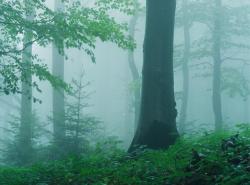 fot. Paweł Fabijański
fot. Paweł Fabijański
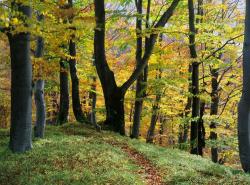 fot. Paweł Fabijański
fot. Paweł Fabijański
